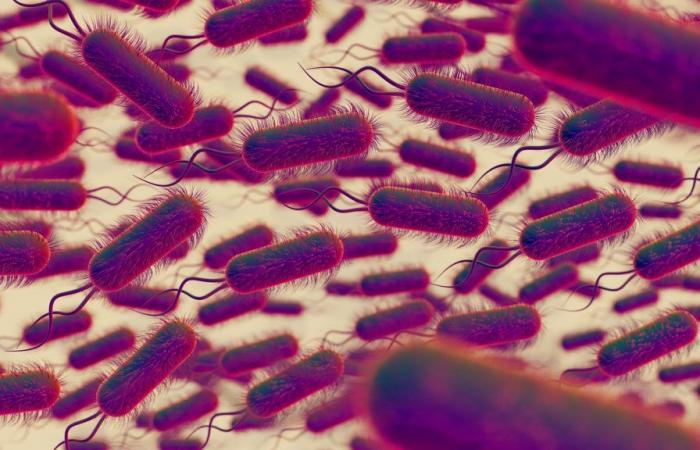Detection tests commonly used to check the absence of microbes in hospitals or the food industry are based on microbial growth, that is to say the laboratory cultivation of microorganisms from a sample to be checked. If there is no appearance of microorganisms during culture, the sample is considered healthy. But faced with the multiple stresses encountered in these environments (presence of disinfectants or detergents), certain bacteria enter a dormant state, called “viable but non-culturable” (VBNC), which makes them undetectable by tests based on growth. Pathogenic bacteria in a VBNC state can “wake up”, become virulent again and thus represent a serious health danger.
Listeria monocytogenes East a bacteria omnipresent in the environment (soil, rivers, plants, etc.). It is responsible for listeriosis, a food-borne disease, the mortality of which can reach 30% in humans. Previous studies have shown that this bacterium is capable of entering a VBNC state when exposed to artificial aquatic environments, but the underlying mechanisms remain poorly understood. This is why the research team set out to better understand this phenomenon to develop effective detection and elimination strategies.
A dormant shape change and a test to detect them
In order to understand the mechanisms of dormancy of L. monocytogenesscientists exposed these bacteria to mineral spring water, a nutrient-poor environment that causes them to enter a VBNC dormant state. They discovered that during the transition to the VBNC state, the bacteria loses its initial rod shape and becomes round. This radical transformation is due to the loss of its cell wall, a structure that gives it its shape and protects it. Despite this absence of a wall, the dormant forms of the bacteria are very resistant and adapt to physicochemical imbalances by modifying their membrane and producing specific proteins. Researchers have thus developed antibodies capable of specifically detecting bacteria L. monocytogenes in a dormant state, which will allow specific tests to be used to detect them.
These results reveal the crucial role of the bacterial wall in the formation of the VBNC state in L. monocytogenes. This adaptation could be frequent and therefore promote the formation of reservoirs of undetectable pathogens, thus posing a serious public health risk. The research team is continuing its work to identify other factors that govern the state of dormancy, the conditions allowing this bacteria to become active and pathogenic again, and to develop tools to detect it specifically to better protect against it.
Reference
Carvalho F. et al. (2024). Aquatic environment drives the emergence of cell wall-deficient dormant forms in Listeria. Nature Communications. DOI : 10.1038/s41467-024-52633-7






